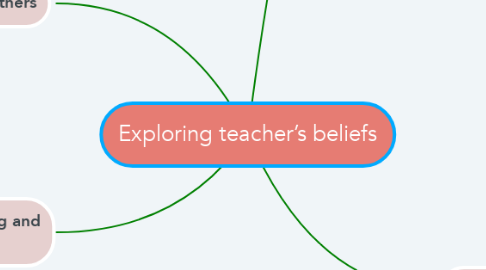
1. What teachers do next?
1.1. Most of teachers are excited and enthusiastic. The challenge is to try to combine what they know whilst, at the same time, trying to use that knowledge to help the students to learn.
1.2. Bournout
1.2.1. Teachers are not the only people to suffer from it
1.2.2. It is important to recognise that over a long career many people Will go through bournout ‘stages’ -periods of time where they lose their natural energy and willigness to participate.
1.3. Professional development experiences and moments can have beneficial effects in all aspects of teacher’s life
2. Teachers in their own
2.1. There is a great deal that teachers can do by themselves to help them understand more about what happens in their classrooms
2.2. Readjust your life
2.2.1. Getting a certificate/diploma/degree: If the teacher has a good education the students are more likely to put their trust in her/him, a Good tecaher needs to be prepared academically well
2.2.2. Lesson planning/creating materials: If the teacher has an interesting class with creative class material it is more likely that the students are more excited to learn
2.2.3. Doing classroom research: Doing research will make students learn to do projects and the class will be more interesting .
2.3. Become a reflective teacher
2.3.1. Some teachers keep a journal -a dairy- in wich they record their lives as a teachers. This is not for everyone, but when it works, the results can be extremely life-affirming.
2.4. Use video and transcripts
2.4.1. One of the most effective ways of getting feedback on our teaching is to film our own lessons
2.5. Undertake action research
2.5.1. Action research is the name given to the kind of experimentation that teachers do for themselves in order to try to make things happen more effectively
2.6. Ask the students
2.6.1. As we have already suggested, asking our students how the feel about what happens in our lessons is one way of learning more about what Works and what does not. Wheter or not it is a part of an action research cycle, we always learn more about how to teach by getting our students involved
2.7. Beware the comfort zone
2.7.1. Staying in the comfort zone can be bad for us, too, since it may dull our apetite for innovation, experiment and risk – all of wich are very Good at making us feel more alive – and it may stop us becoming aware of different possibilities wich could enrich our teaching lives
2.8. Learn something new
2.9. Read profesional literature
2.9.1. One of the great things about the world of English language teaching is that people are constantly writing about it. If we want to stay in touch with what others are thinking – and what they have done in their classrooms – the very best way of doing this to read a range of the journals and magazines that are published regularly
2.10. Write about teaching
2.10.1. One of the best ways of consolidating our thoughts about what we do is to try to write about it. When we try top ut our thoughts into words in a way that other teachers Will understand
3. Teachers with others
3.1. Using video together
3.2. Counselling
3.3. Book groups and other teacher ‘get-others’
3.4. PLNs and the virtual world
3.5. The blogosphere
4. Different ways of observing and being observed
4.1. Before and after
4.1.1. Teachers need to feel comfortable enough to invite observers into their calssrooms, especially where they could do with some advice about teaching a new level or about dealing with a difficult classroom dynamic
4.2. The observation focus
4.2.1. One of the problems with observation as a deveploment tool, as we have suggested, is that observers tend to talk about absolutely everything that has a procedure is counter-productive since the teacher who has been observed is unlikely to remember very much at all
